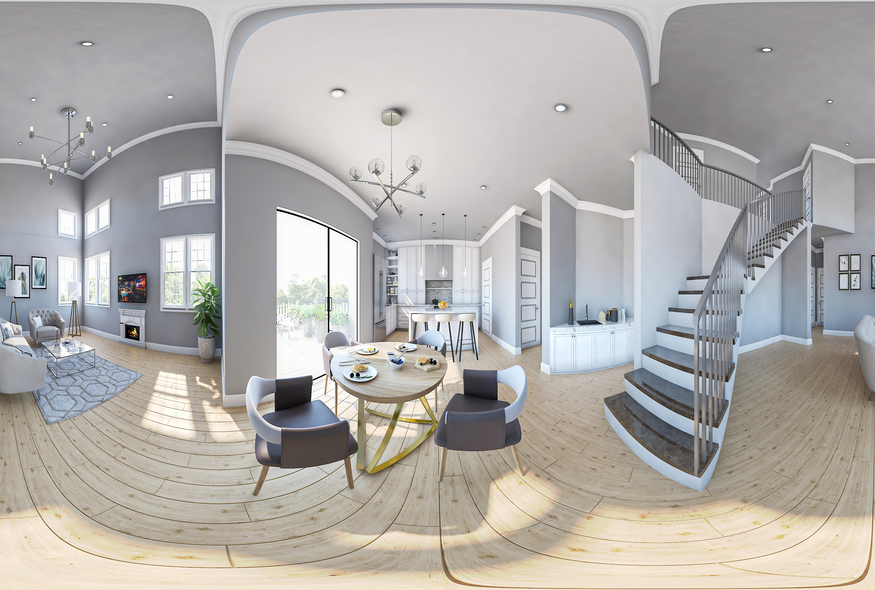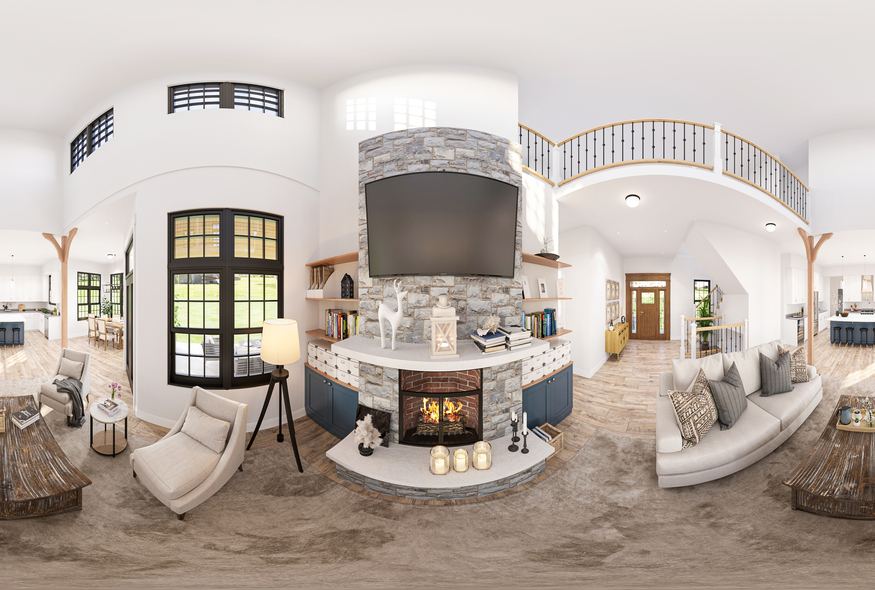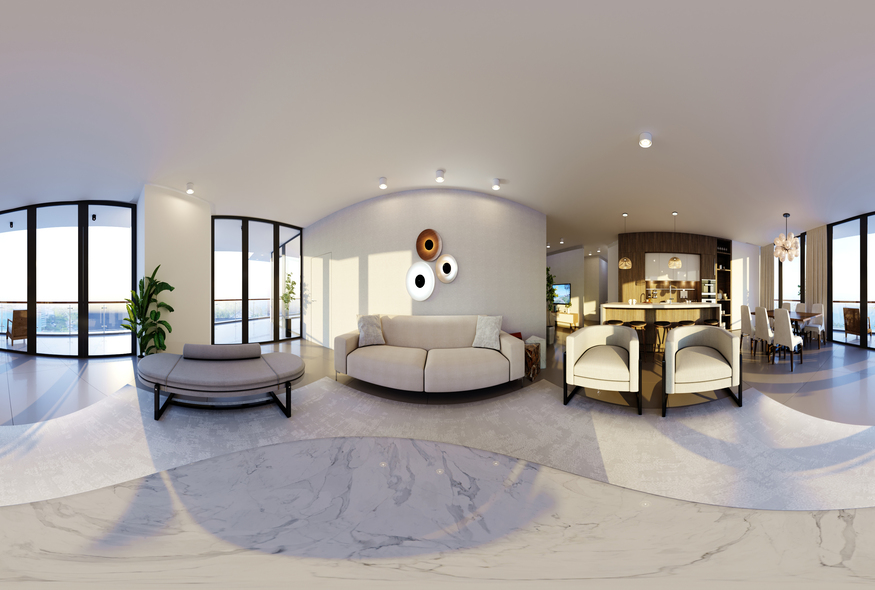A virtual tour serves as a captivating 360-degree journey through a property, offering clients an immersive experience without physical presence. In real estate, virtual tours are invaluable, providing prospective buyers with an in-depth exploration even before the property is constructed. In online listings, a 3D tour elevates the presentation compared to static images. However, crafting these tours demands meticulous effort and time from 3D artists. So, what factors influence the timeframe for creating a virtual tour?

The duration of the process hinges on several key factors, ranging from CGI resolution to the technical capabilities of your chosen studio. To provide insight into what to expect when collaborating with VegaCADD Studio, we've unveiled 5 main factors that influence the timeframe of virtual tour creation. Let's delve into them!
#1. Resolution of Renders

A virtual tour comprises panoramic 3D images, and the higher their resolution, the longer the rendering process. Typically, 3D virtual tour resolutions range from 4K to 10K. At VegaCADD, we prioritize higher resolutions for enhanced realism and detail. However, this preference extends the rendering process compared to lower resolutions.
#2. Number of Interactive Viewpoints
Interactive viewpoints, offering 360-degree views, are pivotal in virtual tours. The more detailed the tour, the greater the number of interactive points required. While adding viewpoints doesn't entail starting from scratch, it necessitates adjustments in camera angles and lighting settings, thus extending the creation time. Additionally, ensuring consistency in lighting and mood across all viewpoints adds to the post-production workload.
#3. Custom 3D Modeling
Custom modeling significantly impacts the duration of virtual tour creation. The more bespoke modeling required, the longer the process. Fortunately, VegaCADD benefits from a vast library of over 70,000 ready-made 3D models, including furniture and decor items, streamlining the project timeline and reducing costs for clients. Despite this resource, crafting virtual tours entails incorporating more information than static renders, especially when showcasing exterior views through windows, which may require additional work.
#4. The Complexity of Architecture and Interior Details

The complexity of architectural layouts and interior designs influences the time needed for tour creation. Simple spaces may require only a few viewpoints, while intricate layouts with irregular shapes or diverse decor necessitate more viewpoints to showcase unique features. Furthermore, advanced features like seamless movement within the tour demand even more viewpoints, prolonging the creation process.
#5. Availability of Rendering Resources
Rendering a virtual tour, especially at higher resolutions, demands significant computational power. VegaCADD utilizes a render farm, a cluster of computers dedicated to accelerating the rendering process. This ensures efficient visualization of complex 3D imagery, expediting project completion.
In conclusion, the timeframe for virtual tour creation varies depending on project specifics. While simpler projects may see initial results within days, more complex endeavors, such as apartments or hotel rooms, typically require about a week for completion. For large-scale projects, VegaCADD allocates multiple 3D artists to expedite the process. Choose VegaCADD Studio for timely and exceptional CGI services tailored to your needs!
Ready to bring your virtual tour to life?
Contact us VegaCADD Studio today for stellar CGI solutions without compromising on quality or efficiency!